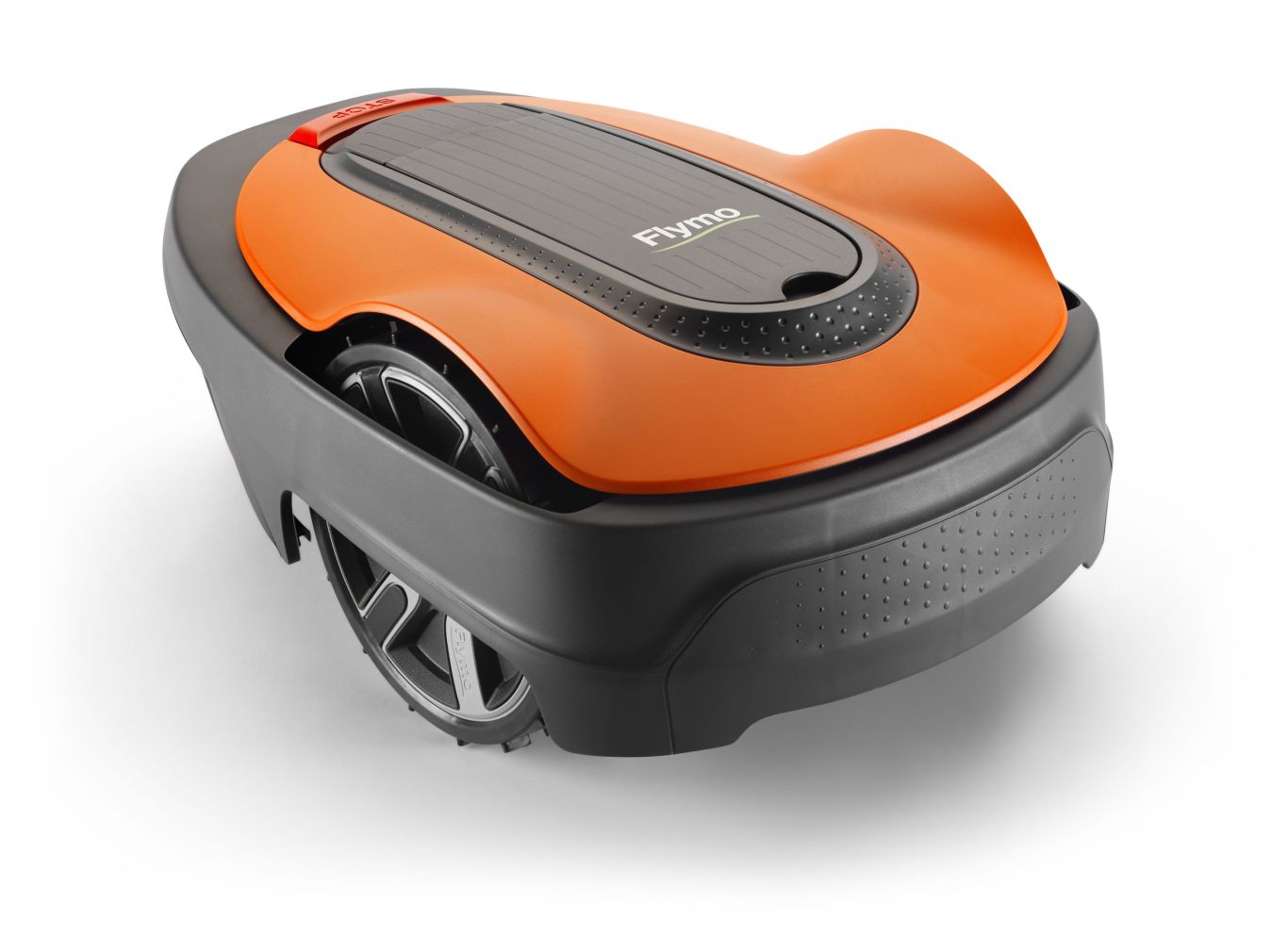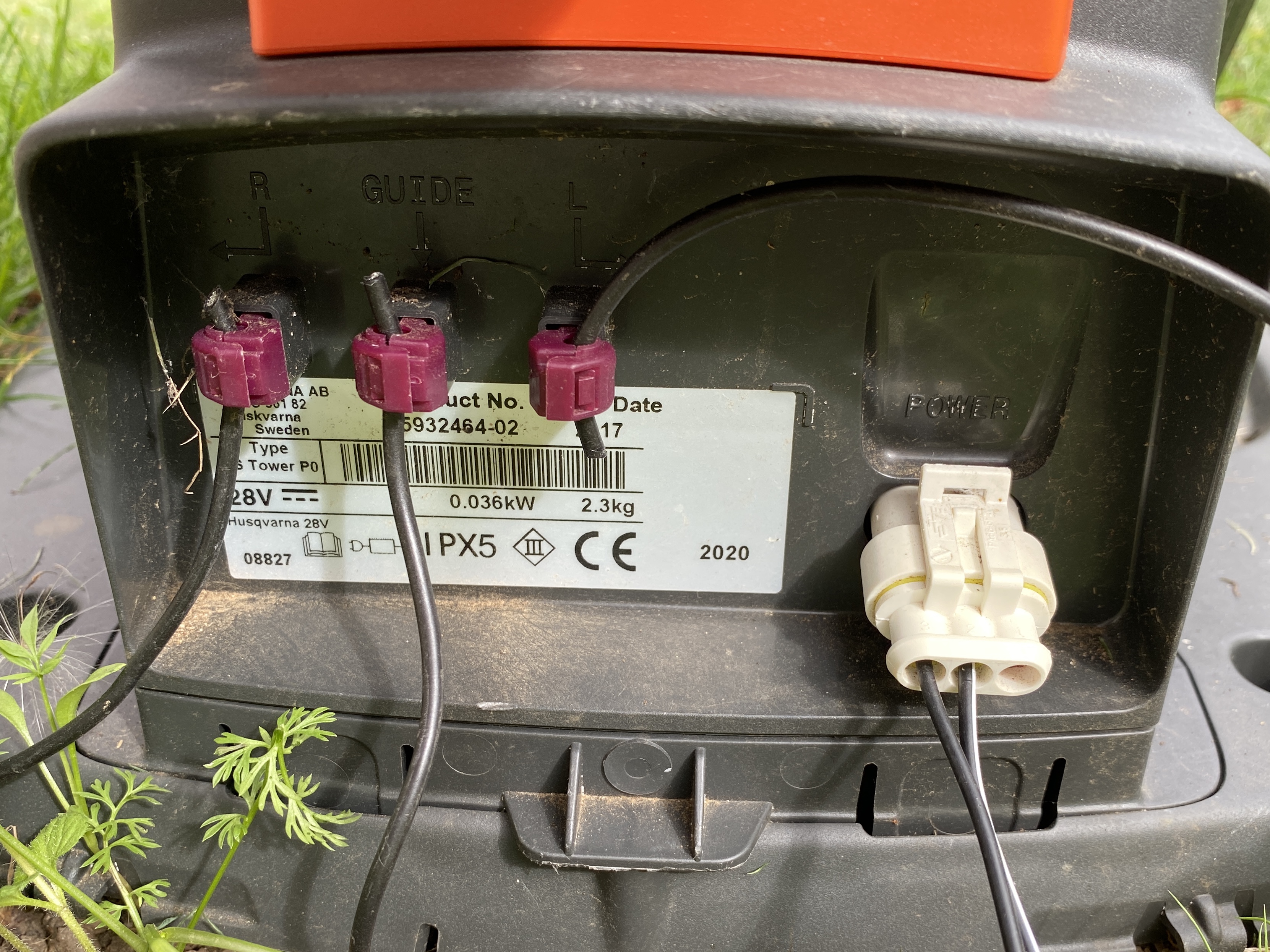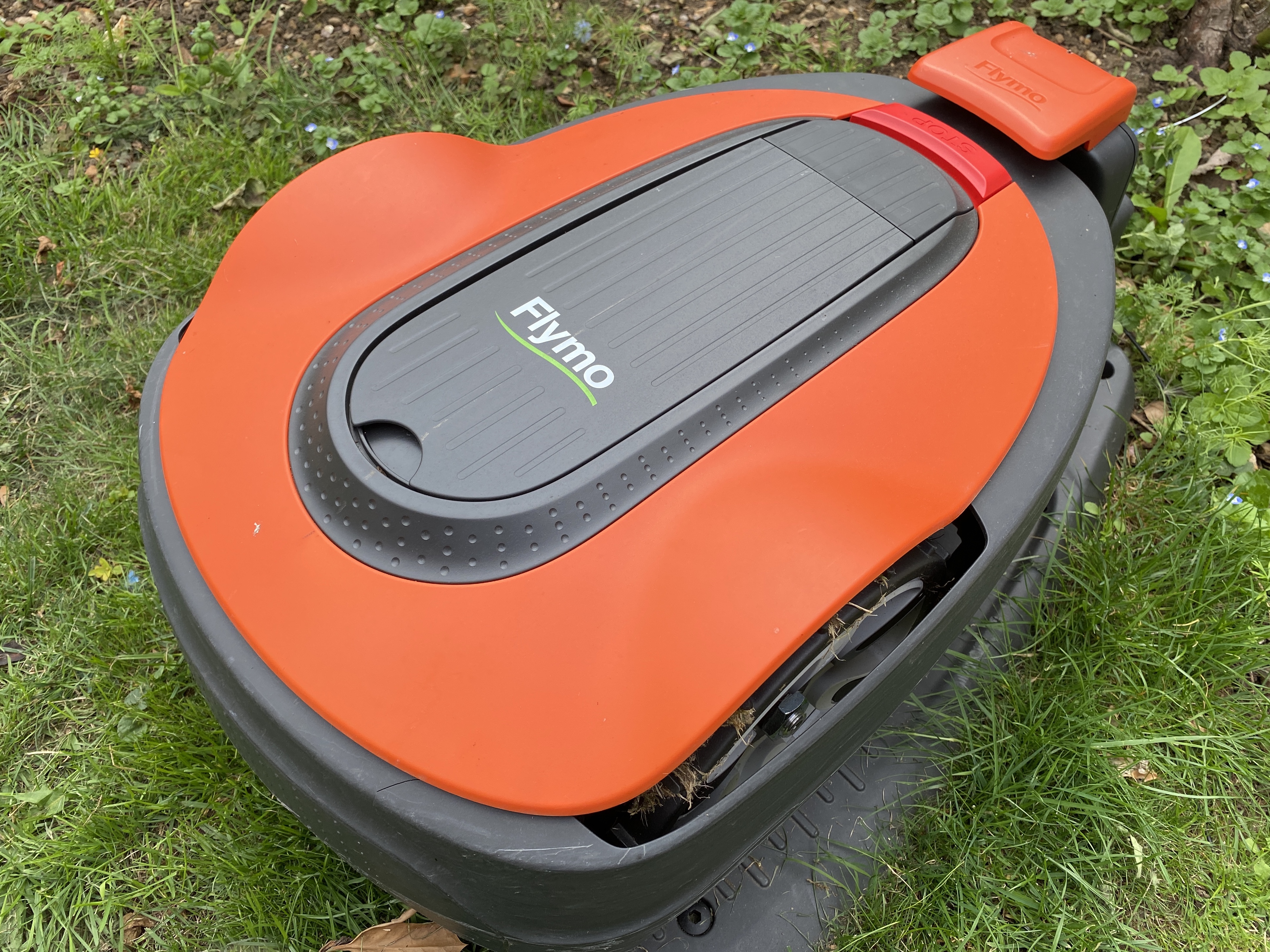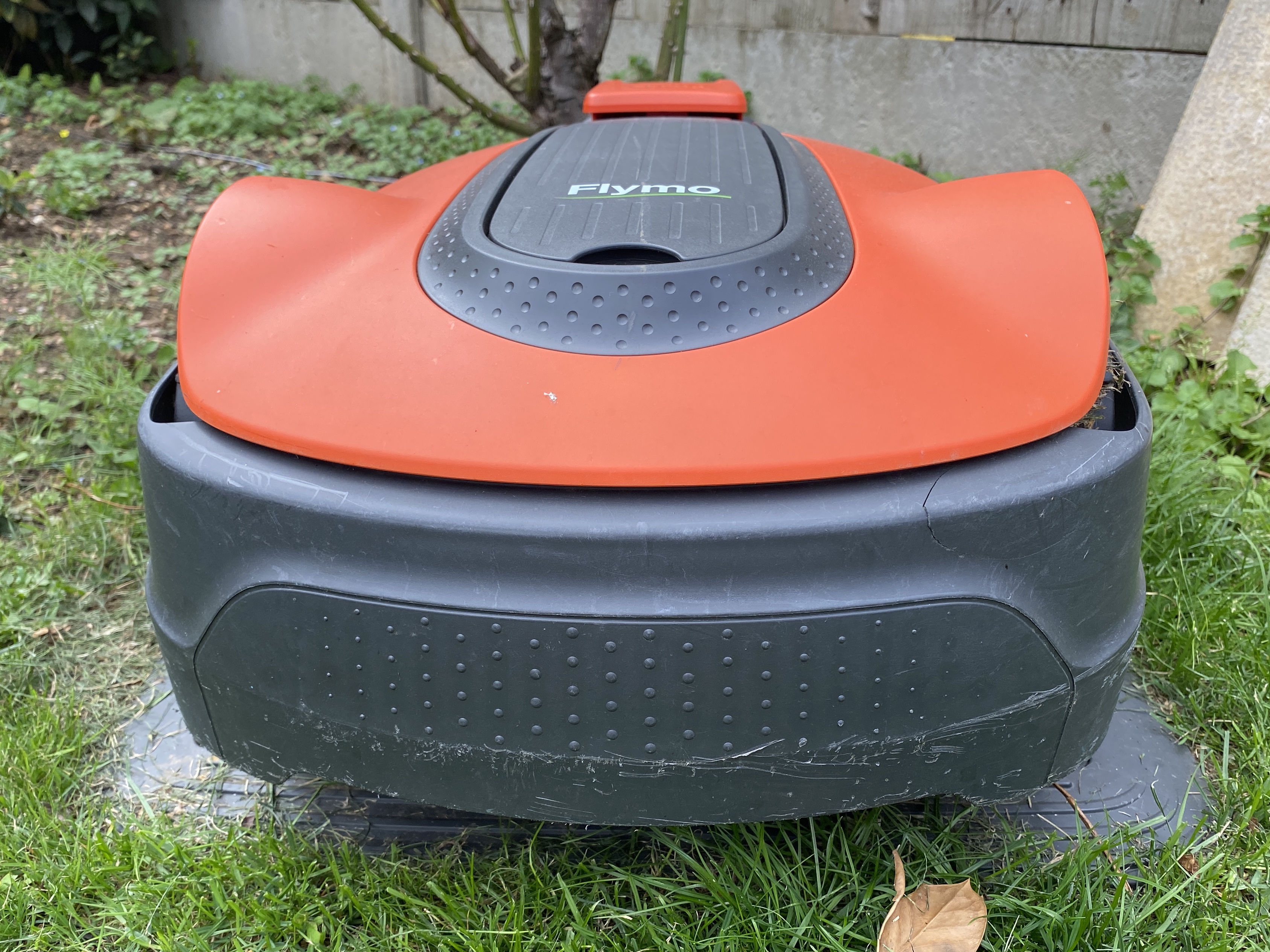
We've tested the Flymo EasiLife 200 robotic lawn mower – and were impressed. If you’re anything like us, mowing the lawn is one of those jobs that always gets bumped to the bottom of the to-do list, along with washing the car and cleaning out the fridge. Of course, that means it’s always a mad rush to get it looking shipshape whenever we have visitors coming round (along with the rest of the house, natch). So the idea of having a lawn that’s always looking its best, whenever you want to enjoy it, is very appealing indeed.
The Flymo Easilife 200 aims to do just that. It’s the company’s new entry-level robot lawn mower, replacing the popular 1200R, and is aimed at lawns of up to 200m2. If you have a larger space, there are models in the same range that will accommodate up to 350m2 and 500m2, but you’ll have to pay a little more for the pleasure.
As with any robot lawn mower, there is some initial set up work to do, which does take some time and a fair bit of patience. However, once it’s all done, you can pretty much leave this mower to its own devices from there on in - simply set up your schedule either on the mower itself or via its app, and it’ll do the rest for you.
We lived with the Flymo Easilife 200 for over a month to see how it fared on our 60m2 lawn. Read on for our experience and whether having it around really meant we could take mowing off our to-do list for good.
See more of the best lawn mowers 2020 in our buyer's guide.

Flymo Easilife 200 product specs
- Lawn coverage: 200m2
- Cutting length: 2cm to 5cm
- Noise level: 58dB
- Weight: 7.3kg
- Connectivity: Bluetooth
- Charging time: 60 minutes
- Waterproof to IPX4
- 100m2 of wire included/150 pegs
- 10m low voltage cable included
- Two-year warranty
Who will the Flymo Easilife 200 suit?
As with any robot lawn mower, the Easilife 200 is aimed at people who either have the money to spend on nice-to-haves or keen gardeners who are struggling to get out to push the lawn mower around the garden as easily these days.
It’s a considerable investment compared with a standard lawn mower, but it does make life a lot easier for those that can either afford it or will really benefit from it.
Get small space home decor ideas, celeb inspiration, DIY tips and more, straight to your inbox!
First impressions
You might be surprised by the size of the Easilife 200 - it’s actually pretty compact when you consider all that is going on in there. This is obviously helped by the fact it has no grass collector like your standard lawn mower might have (more on that shortly), and of course there are no handles.
It moves around on three wheels, has three cutting blades in charge of the mowing and a lift-up flap that hides all the on-board controls.
At just 7kg, it’s pretty lightweight too - that’s half the weight of our normal lawn mower. Hopefully you won’t need to be picking it up too much anyway, but for general maintenance you will need to turn it over to ensure the blades are clean once a week or so.
Setup and installation

For many, the idea of a robot lawn mower is a little bit daunting due to the setup involved. Considering I’m someone who messes around with technology most days, even this was a new one on me, so I wasn’t sure what to expect.
The fact is, it’s not particularly complicated but it is time consuming and a bit of a faff. You’ll need some patience, and to set aside a couple of hours to get started, depending on the size and shape of your garden. It took me two hours for the initial set up, but I did have to revisit it a couple of times to fix a couple of issues in the first week or so.
It comes with a quick start guide and a manual, though the latter isn’t the easiest to understand. The quick start guide covers most eventualities though, and I also went on to Flymo’s YouTube channel to watch the setup video there, which was helpful.
To start with you’ll need power, ideally from an outdoor power socket as you want to keep it plugged in all the time. Flymo includes 10m of low-voltage cable to run from your socket to wherever you want your robot mower to live , but we needed to buy a bit more to make it reach. Flymo sells additional lengths to suit your needs and doesn’t recommend using extension cables, so measuring ahead of time to get prepared is a good idea.
The Flymo’s charging port is designed to sit wherever is convenient, be that a corner or on a straight of your lawn. The only requirements are that it has a metre clearance in front of it and 30cm either side. You’ll also want it on as flat a piece of ground as possible, so avoid slopes and uneven ground as much as you can.
Now you can start installing the wires, and there are two types - the boundary wire, which goes all the way around your mowing area, and the guide wire, which cuts across your garden to help the mower always have a path home.
Flymo includes 100m2 of wire for this job, so plenty to cover the space that this model is intended for.
You’ll want to start at the charging port, leaving a decent length of wire to connect up later, and start moving around the border of your garden. Place pegs at regular intervals to secure it and ensure the wire is as flush to the ground as possible, to prevent any damage from the lawn mower. We experienced a couple of issues in the first few mows, so if in doubt, use more pegs.
We went for the simple installation of pegging the wire on top of the grass but if you’re having your garden re-done, you can have the wire buried underneath the turf for a smarter look.
You’ll need to take into account any obstacles in your garden you’d rather the Flymo avoid. It will bump into solid objects, like our toddler’s swing and our washing line, and move on without issue, but if you have a flower bed in the middle of your lawn, you’ll want to loop the boundary wire around it so the Flymo knows to steer clear.
You’ll also need to leave a certain amount of space away from any borders, walls and drops, to ensure the mower knows its boundaries and won’t get damaged trying to get places it shouldn’t. This does mean some manual tidying is required to finish the job, but it’s fairly minimal.
Flymo recommends you sketch out your garden beforehand so you can plan exactly what needs to be done before you start, which was actually a big help.
This also helps you to work out where to lay the guide wire. This will run straight from the charging port and cross section your garden, joining into the boundary wire at the other end of your lawn. It basically means that should the mower ever get confused or lost mid-mow, it has a lifeline that will guide it directly back to its base for a breather.
Once you’ve got all the wires you need in place, you’ll need to connect both ends of the boundary wire and the guide wire into the back of the charging port - a green light will tell you that all is working as it should.
Now you’ll be prompted to charge the mower, as well as set things up like time, date and a security PIN code to prevent theft. You can also select the grass length you’ll want using the manual dial, with lengths between 2 to 5cm, at half centrimetre intervals.
Don’t forget to download the Flymo Easilife app, which connects your phone to your mower via Bluetooth. It’s a fairly simple app but it does the majority of what you’ll need. You can see what it’s up to, make adjustments to its schedule and override a schedule to do a spontaneous mow. You will have to be within Bluetooth range though, so you can’t set it going when you’re not in the house.
How easy is the Flymo EasiLife 200 robotic lawn mower to use?

Once you’ve got past the setup process, the Easilife 200 is very easy to use, because you really have very little involvement in its operation. You’ll need to give the blades their recommended weekly clean with a dry brush, but other than that, the Easilife 200 should really carry on its business on its own.
Of course, you’ll need to be on hand to rectify any issues that the mower comes across, which will likely be in the first few mows if they are installation related.
Our lawn is on the uneven side, and despite putting in more than the recommended amount of pegs, we still experienced a break in the wire about a week in. Thankfully, a number of wire connectors are included in the box, so it was just a case of fixing the two ends together with one of those rather than re-laying the whole thing. A relief to say the least! Still it’s worth double checking your wires every now and then for any wires that have lifted, which could cause an issue.
Of course, random issues will no doubt crop up every now and then too, but we have to say we’ve experienced very few. We did have one error where the mower was unable to dock due to an apparent obstruction, but when we went to check on it, there was nothing in its path at all. We docked it manually and it was fine thereafter.
If you’ve taken the time to set up the mower well, issues should really be few and far between. However, we did find it annoying for those few times that we did encounter them, that error reports are not pushed to your phone as a notification. You have to open up the app to see any issues, meaning the mower might have been idle for some time before you realise.
Speaking of the app, that is really easy to use too. There aren’t loads and loads of menu options to wade through, which helps - just the home screen that shows the current status of the Flymo, an area to view, set and change the schedule, an option to put it into holiday mode, a place to check previous error messages and the option to start an override mow.
There’s also a help section for troubleshooting or checking the manual, in case you’ve misplaced the paper copy it comes with.
Cutting results

The Flymo Easilife 200 is different to our regular mower in that it doesn’t collect any grass cuttings, and uses a process called mulching instead.
That basically means that it cuts the grass and leaves the cuttings on the lawn, which in turn works as a natural fertiliser to improve the grass quality.
If you’re thinking this will leave unsightly clumps of grass sitting on top of your nicely cut lawn, it doesn’t. The mower works in a random path and will continue to cut and re-cut the clippings every time it passes over them. This makes them very fine indeed and you’ll only notice they’re there if you run your hand over the grass.
You will find the random path programming takes a lot longer to complete than you would running the lawn mower over the grass yourself, but since you can set it to mow whenever you want, the time it takes is pretty irrelevant.
We set it to mow in the early morning so its cut for the day was already complete by the time we were downstairs, meaning it didn’t interrupt any garden time we wanted to enjoy. At 58dB, it’s so quiet it doesn’t disturb us or our neighbours either, so you really can run it whenever you want.
Whatever you decide works for you, you can schedule it within the app, or you can use the scheduling wizard to get a recommendation based on your lawn size. You can’t select a lawn size smaller than 100m2 though, and for this, it recommends two hours a day, which we found a little too much for what our lawn needed.
We activated LawnSense, which is Flymo’s automated mowing feature that learns your lawn as it mows. It says it will adjust its schedule to suit your lawn growth and also to avoid any adverse weather conditions, such as rain.
We did see it skip rainy days as promised but otherwise it continued to run daily, which we weren’t convinced our lawn needed. After a couple of weeks, we decided to manually adjust the schedule ourselves to just a couple of times a week, and have found this works best for our lawn.
The result is that our grass has never looked so consistently neat and tidy, though of course you will still need to take the time to neaten up the borders and edges the Flymo can’t get to with a strimmer.
Battery life is pretty impressive too. For larger lawns, the Flymo will need to take itself back to the dock to recharge before completing the job, but it manages the two hours scheduled daily for my lawn in one outing, even returning with some battery to spare.
Additional features

The Flymo Easilife 200 is adaptable to most garden designs, but if yours is a bit more complicated, you will need some extra consideration during setup (not to mention, a bit more time).
Our garden is relatively straightforward, with two sections of grass separated by a concrete path. If yours is the same, you can treat it as a single patch of grass and the Easilife 200 will roll between the two sections without issue.
However, if your garden is a little more complicated - perhaps you have different levels of lawn separated by steps, for example - you’ll need to set up a secondary area instead.
This involves you manually moving the Easilife 200 between areas once it has done cutting the first, so there’s a bit more of your involvement required to get the job done.
In terms of weatherproofing, the Flymo can handle a standard British summer without issue, thanks to being waterproof rated to IPX4. The company does suggest you avoid running it during a thunderstorm though, and recommends disconnecting the charging port to protect against damage to the mower by any potential lightning strikes.
Finally there is FrostSense, which will recognise when the temperature drops before 5 degrees and prevent the mower from operating as well as a feature called Spot Cut.
The latter can only be selected on the mower itself, rather than via the app, and allows you to lift the Flymo to an area that the mower may have missed or that needs more attention. The mower will then work outwards in a circular motion to ensure the area has been covered before it reverts back to complete a standard mow.
How does the Flymo Easilife 200 rate online?
Online reviews for the Easilife 200 are very positive indeed, including the user reviews on Amazon, which give it 4.5 stars and praise its ease of use and performance.
We’d agree with that. Though the set up is time consuming and at times a little frustrating, once it’s done, it’s done. Now we barely know it’s there. We rarely see it in action and it never requires our input, yet our grass has never looked so consistently neat and tidy. That makes it entirely worthwhile in our book.
The verdict
At £650, the Easylife 200 will be a considerable purchase for most, so it’s important to know you’ll get the most out of its benefits before you spend the cash.
Keen gardeners probably need not apply, but those who struggle with mobility or who don’t have the time or inclination to spend time keeping their garden looking its best are likely to find this a very welcome addition indeed.
You’ll need the patience to get it set up properly, and those with less complicated lawn designs will get the most of the hands-off approach it has been designed to offer, but if you’ve been intrigued about adding a robot lawnmower into your gardening arsenal, the Flymo Easilife 200 is a great machine to invest in.
Read more:
Verity Burns is our smart home tech expert. She has been writing about technology for over a decade, and spends a lot of time tinkering with the latest in smart home tech for The Hub section of Realhomes.com. You may even spot her chatting about smart home best buys and top tips on The Real Homes Show. When she's not writing, reviewing or offering tech support to various members of her family, she's a mum of three – one real baby and two furry ones. You'll always find her in the living room, recalibrating terrible TV settings at parties.

